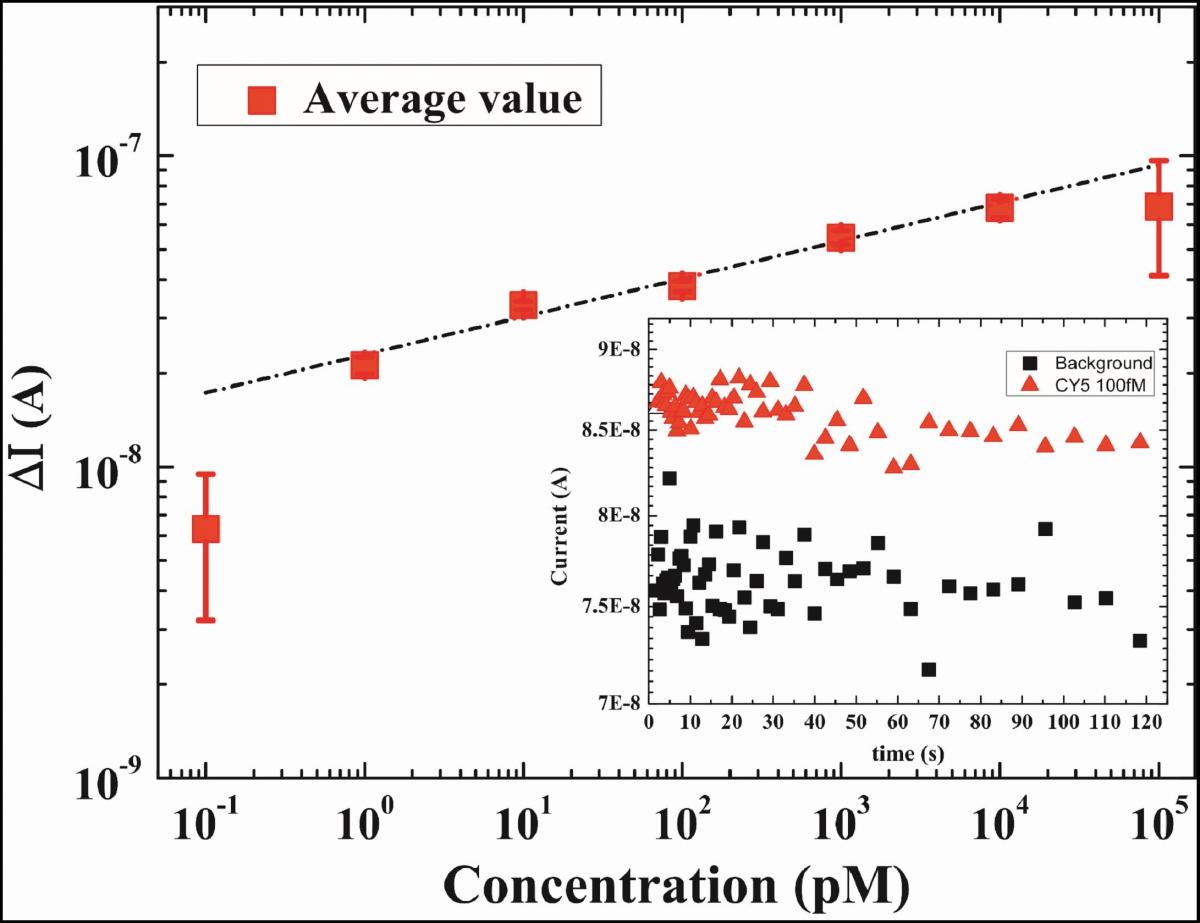
The main goal of the activity is the design and fabrication sensoristic systems based on optical and/or electrical devices for biological molecules recognition (DNA, toxins, proteins) and/or chemical elements (cyanides, heavy metals) in liquids or food; hemoglobin oxygenation monitoring.
We developed a sensing element fabrication procedure able to anchor covalently biological or synthetic molecules on Si-based surfaces. The main constraints being the presence of a free amino-group in the sensing molecule and the use of silicon dioxide(SiO2) or nitride (Si3N4) as bonding surface.
The optical transduction method is based on the use of very sensitive photodetectors, the silicon photomultipliers (SiPM), used in combination with fluorescent dyes or chemiluminescent reactions. The electrical detection systems are based on the use of Si devices, more specifically MIS diodes and MOSFET. The research activities in this field are devoted to define the best device structure by using device and process simulations; to study the transduction signal, performed using MIS-like capacitors and traditional MOSFET coupled with an external gate extension.
The research activities of the group, in collaboration with other research groups, institutes and industries, are:
- Study of the chemical-physical mechanisms during biological molecules recognition (DNA, toxins, proteins) and/or chemical elements (cyanides, heavy metals) in liquids or food; and optical or electrical transduction of the signal;
- Design, fabrications and testing of Si-based sensors (MOSFET or photodedectors) and sensor systems with the aim to allow an easy technological transfer;
- Sensing layer fabrication by using covalent immobilization protocols;
- Optical Detection of Low DNA content (see the logo and Fig. 1 for solid and liquid samples, respectively) by using different photodetectors (photodiodes, APD, SiPM) with conventional and/or innovative fluorophores (CY3, CY5, Ru(bpy)32+) ;

- Implementation of optical systems in PCR (in the logo) and microarray (see Fig. 2) configurations;

- Silicon photomultipliers application to continuous wave NIRS for brain imaging and PPG applications (funded ECSEL project – ASTONISH);
- Silicon photomultipliers application to time resolved NIRS;
- Optical Detection of water pollution by using chemiluminescence or optical markers;
- Electrical detection of DNA by using MIS diodes (in the logo) and MOSFET devices (Fig. 3): devices simulation, characterization and applications;
- Water pollution detection by using biological and synthetic molecules.

Reference Person: Sebania Libertino


